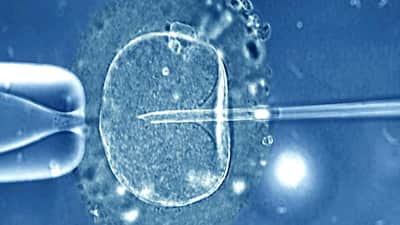
Freezing embryos is also an upcoming option for younger couples keen to delay pregnancy.
Fertility preservation involves freezing (Vitrification) of eggs, sperm or embryos to utilize them later in life. This procedure is done due to both Medical and Non-medical reasons. Medical reasons include Cancer therapy or before any surgery on the ovaries, while Social egg freezing or cryopreservation is included under the non-medical part. In this article, Dr Duru Shah explains why there has been an increasing public awareness about egg freezing in recent years.
Woman’s Age
With worldwide coverage by media sources, celebrities and promising corporate benefits for employees, many women are encouraged to opt for this procedure. The most common reason is not finding the right partner and various career priorities! The woman’s age at which the eggs were frozen is the prime factor for achieving better success rates.
American Society Of Reproductive Medicine Society
More eggs can be retrieved from younger women, eventually leading to a good quantity of eggs being frozen for future use. But it doesn’t seem all that simple! Not every frozen egg can survive thawing and form a normal embryo. According to the American Society of Reproductive medicine society (ASRM) practice guideline, the estimated survival rate of oocytes after vitrification and thawing is 90% 97%, the fertilization rate is 71% 79%, and the implantation rate is 17% 41%.
Clinical Pregnancy Rate
The estimated clinical pregnancy rate per vitrified and thawed oocyte is 4.5% 12%. Thus, the journey from an oocyte to an embryo involves multiple hurdles! Recent studies state that freezing at least 15 mature eggs gives an almost 80% chance of a live baby if the eggs have been frozen before 35 years.
READ RELATED: 6 New & Returning Sweets Trader Joe's Shoppers Are Raving About
With Advancing Age, This Ratio Diminishes Further
Freezing embryos is also an upcoming option for younger couples keen to delay pregnancy. This procedure requires sperm to fertilise the egg before freezing.
- According to SART (Society for Assisted Reproduction) Data, the implantation rate with frozen embryos is almost 52.3% per cycle in women <35 years, 47% between 35-37 years, 38.2% between 38-40 years, 24% between 41-42 years and 9% in women >42 years. Success rates depend on infertility factors, Semen quality, ART techniques, and the number of embryos transferred.
- There have been no statistical differences between IVF cycles using fresh or frozen embryos, although few studies claim higher success rates with frozen cycles.
- Freezing sperm can be offered to men undergoing cancer treatment or having any risk of injury to their private parts. Men have millions of sperm in their semen!
- The human sperm is a complex metabolic structure vital to forming a healthy embryo. Recent studies have observed freezing-related DNA damage to sperms and decreased viability post-thawing them, though these issues are still debatable.
To conclude, with the advent of rapid freezing or vitrification, success rates with frozen eggs and sperm are equivalent to that of fresh cycles, and there is no effect of the length of freezing on the live birth rates.
Total Wellness is now just a click away.
Follow us on
Don’t Miss Out on the Latest Updates.
Subscribe to Our Newsletter Today!
window.addEventListener(‘load’, (event) => {
$(‘#commentbtn’).on(“click”,function(){
(function(d, s, id) { var js, fjs = d.getElementsByTagName(s)[0]; if (d.getElementById(id)) return; js = d.createElement(s); js.id = id; js.src = “//connect.facebook.net/en_US/sdk.js#xfbml=1&version=v2.3”; fjs.parentNode.insertBefore(js, fjs);}(document, ‘script’, ‘facebook-jssdk’));
$(“.cmntbox”).toggle();
});
});









